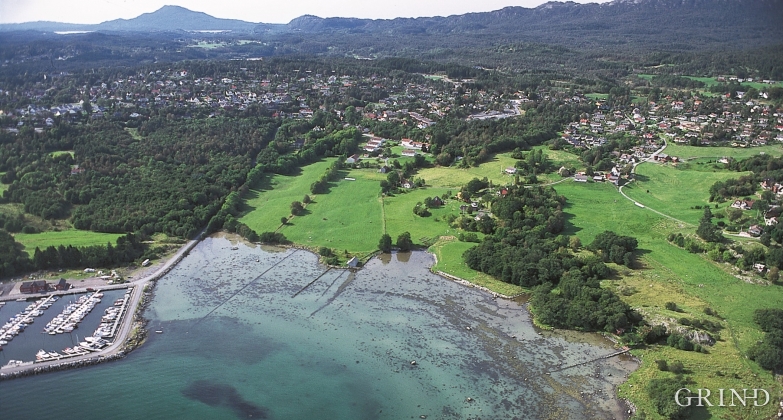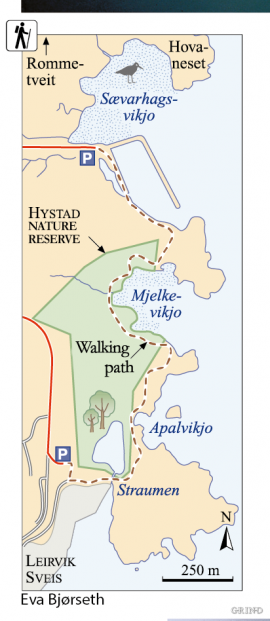Published: 22.07.2015 | Author: Stein Byrkjeland
Sævarhagsvikjo is naturally associated with the black alder forest in Hystadmarkjo. The small boat piers (left) that now separate these areas were a controversial intervention when they were built in the 1980s. (Helge Sunde)
IT IS SERVED - ON THE TIDAL SHORES
Most of the shoreline toward the sea in Sunnhordland is stony and steep. Therefore, flat tidal areas are scarce, yet these are especially important for the wading birds when they need food and rest during their autumn migrations. Sævarhagsvikjo is the biggest flat tidal area in Sunnhordland.
Hungry wading birds do not arrive too late to their meals, which as a rule are served at low tide. Then, areas of the seafloor lie exposed, revealing lugworms, earthworms, and mussels that live in the sediment. Most of these have dug down into the soft seafloor, but are nonetheless easy to catch. Many wading birds search for nutrients according to systematic principles: they peck continuously with their beaks in the sea bottom. Their sensitive beaks tell them when they have come across a tasty creature and then they act fast.
Gulls, meanwhile, employ another technique. By tramping with their flat feet on the wet bottom, they press together the tunnels that the small creatures make, forcing many of them up to the surface. Then they are easy prey for the gluttons. Kelp mounds that build up on the shore line are also very tempting. Inside of one of these mounds the temperature can be higher, so it is well-suited for hatching the eggs of the kelp flies. Such fly larvae are treats for the small waders, red-throated pipits and flocks of starlings.
Birds that look for food in the strand zone are always in a hurry, for soon it will be high tide again. Then they must take a rest or travel on. One sees most waders in Sævarhagsvikjo in the autumn. In the Spring, many of these birds use another migration route, and so are not as dependent on stopping here. Other common species are the red-breasted merganser and the grey heron, who both live from small fish. In winter the great cormorant and eider ducks are also common guests.
- Heggland, T. H. 1995. Vadefuglane i Sævarhagvikjo 1989–1994. NOF – Sunnhordland lokallag, rapport.
- Munkejord, Aa. 1977. Meddelelse fra en jakt etter Hordalands gode våtmarkslokaliteter. Krompen 6 (3):34–37.





